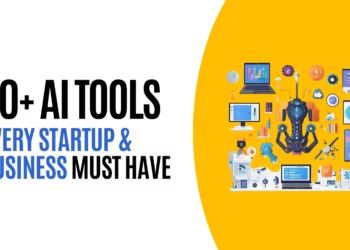image from : medium.com
Why Remote-First Startups Are Winning in 2025
How building a remote-first company gives you access to global talent, lower costs, and higher productivity.
Introduction
Remote work is no longer a trend—it’s a strategic advantage. In 2025, remote-first startups are outperforming traditional office-based companies in terms of agility, cost-efficiency, and talent acquisition. With access to cloud tools, asynchronous workflows, and global hiring platforms, startups are redefining how companies are built from day one.
This article explores why remote-first startups are thriving, how to build one, and which tools and systems make it work.
1. Access to Global Talent Without Relocation Costs
By embracing remote work, startups can hire the best talent regardless of geography. This not only increases the quality of hires but also cuts costs on salaries, office space, and visa sponsorships.
Example: Hiring a top-tier developer in Eastern Europe or Southeast Asia at half the Silicon Valley rate—without sacrificing quality.
SEO Keywords: remote hiring for startups, global tech talent, international remote teams
2. Reduced Overhead and Operational Costs
Startups no longer need to burn budget on office leases, utilities, and in-office perks. Remote-first models help teams reinvest capital into growth, product development, and customer acquisition.
SEO Keywords: reduce startup costs, no office startup, lean operations 2025
3. Increased Productivity Through Asynchronous Work
Remote-first startups thrive on asynchronous workflows that let people work when they’re most productive—across time zones. Tools like Slack, Notion, Loom, and Linear allow seamless collaboration without endless meetings.
Bonus Tip: Adopt a “write it down” culture to document everything and reduce communication gaps.
SEO Keywords: asynchronous team tools, remote productivity tips, startup work culture
4. Employee Satisfaction and Retention
Flexibility is the new currency. Startups that offer remote flexibility attract top talent who value autonomy, work-life balance, and geographic freedom. This leads to higher retention and stronger loyalty.
SEO Keywords: remote work satisfaction, retain remote employees, work-life balance startup
5. Access to Global Markets from Day One
Remote-first startups are inherently global. Teams working from different regions bring local insight, enabling startups to build products with international reach, localize faster, and tap into non-saturated markets.
SEO Keywords: global startup strategy, remote global expansion, localize SaaS products
6. Resilience to Disruptions
Pandemics, political unrest, or natural disasters are less disruptive to remote-first teams. Cloud-based systems and decentralized workflows create business continuity and adaptability.
SEO Keywords: business resilience, startup risk management, future-proof startup
7. Top Tools That Power Remote-First Startups
Here are essential tools for remote-first success in 2025:
-
Communication: Slack, Zoom, Twist
-
Project Management: ClickUp, Notion, Trello
-
HR & Payroll: Deel, Remote.com, Oyster
-
Async Collaboration: Loom, Figma, Linear
-
Documentation & Knowledge Base: Notion, Confluence
SEO Keywords: best tools for remote teams, remote SaaS stack, startup toolkit 2025
8. Remote-First is Investor-Friendly
VCs are no longer skeptical of remote teams. In fact, many funds favor remote-first startups for their scalability, lean cost structure, and ability to weather economic downturns.
SEO Keywords: remote startup funding, investors remote-friendly, VC remote teams
Conclusion
In 2025, remote-first startups aren’t just surviving—they’re leading. They’re leaner, faster, and more adaptable than their traditional counterparts. If you’re starting a company today, building remote-first isn’t a limitation—it’s your superpower.










